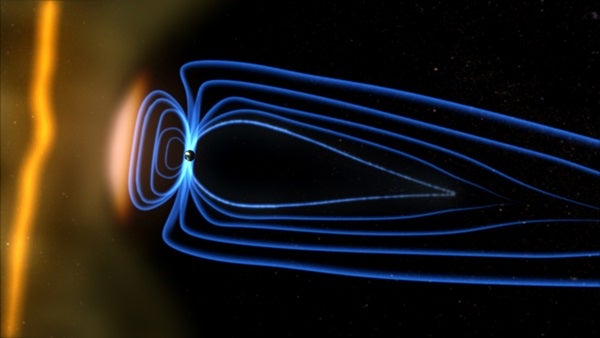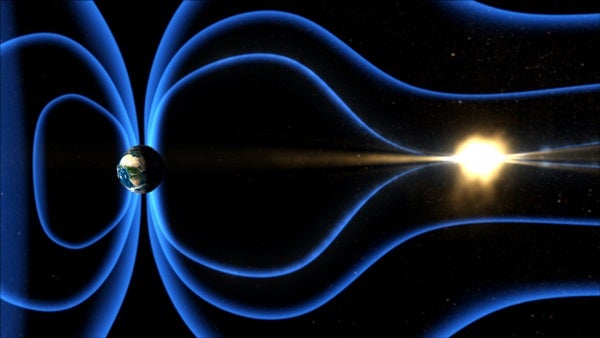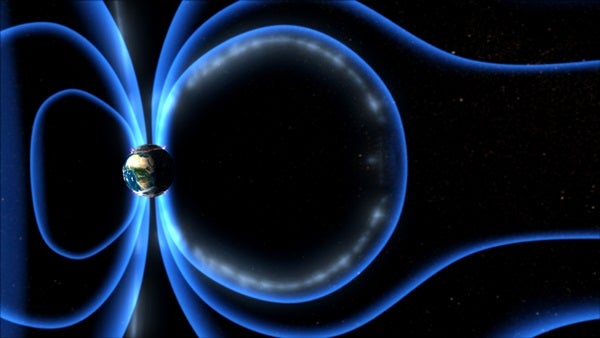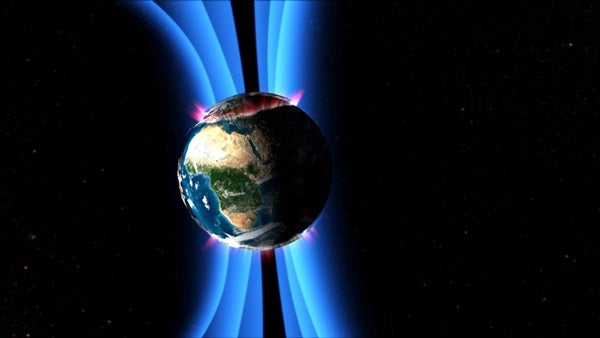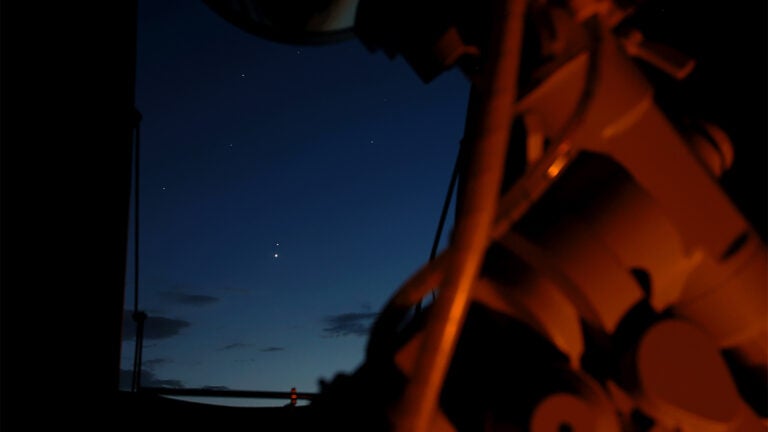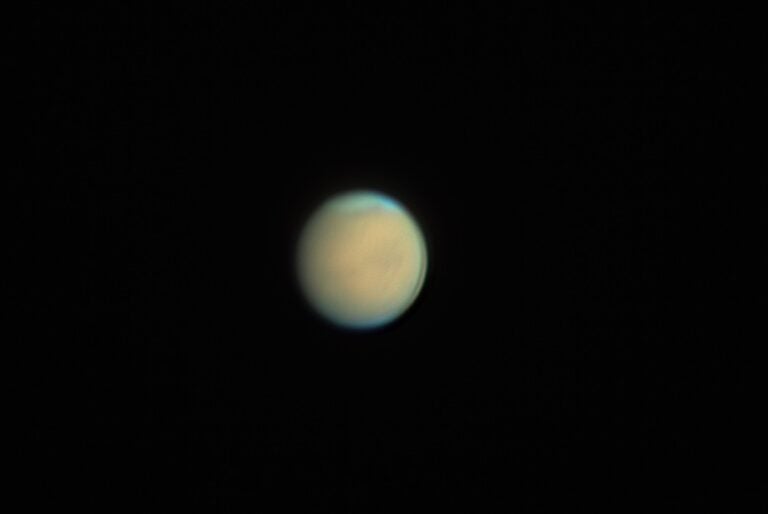The visible aurorae result from electrons that move along magnetic field lines from space into the upper atmosphere. There, the electrons lose their energy in collisions with atoms and molecules, which, in turn, radiate this energy as light. To generate an aurora, we need enough electrons of sufficient energy, a magnetic field to guide them, and an atmosphere to produce the light. Earth meets these conditions: The atmosphere is everywhere, and the magnetic field reaches into space at high latitudes. The question is, then, where do the energetic electrons come from?
To produce good aurorae on Earth, electrons need to have energies in the range of 1,000 to more than 10,000 electron volts (1 eV is the energy an electron would pick up by going through a 1-volt electric field). Electrons with less energy will create faint red aurorae at high altitudes; electrons with much more energy penetrate too deep into the atmosphere and make X-ray aurorae.
Earth’s magnetic field creates a protective “bubble” called the magnetosphere. The magnetic field can be separated into two distinct regions: high and low latitudes. At high latitudes, the field lines reach into the solar wind of radiation and particles and never connect to Earth’s other hemisphere; these are called “open” field lines. At low latitudes, the field lines are like bar magnets, curving through space to the other pole; these are “closed” lines. The open field lines connect to the solar wind and also to the outer layers of the interaction region between this solar wind and the magnetosphere. The electrons in that region usually have energies in the range of 10 to a few hundred eV. Only on rare occasions do these particles cause a faint red glow above the polar cap.
Between the regions of open and closed field lines lies a transitional boundary, where processes can accelerate enough electrons to the energy necessary to cause aurorae. This boundary forms a ring-shaped region around Earth called the auroral zone, where aurora can occur.
At latitudes lower than the auroral zone, Earth’s magnetic field connects to regions of space that are closer to the center section of our planet’s magnetosphere. These field lines don’t reach far enough into space to energize auroral electrons.
Dirk Lummerzheim, University of Alaska, Fairbanks

